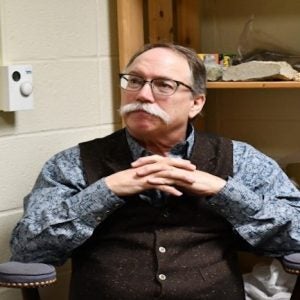
Dutch nuclear regulator ANVS (De Autoriteit Nucleaire Veiligheid en Stralingsbescherming) has reviewed three reactor designs which had been proposed for the planned expansion of the Borssele NPP. The review was undertaken at the request of the Ministry of Climate & Green Growth (KGG – Ministerie van Klimaat en Groene Groei). The designs reviewed were AP-1000 designs (Westinghouse), APR-1400 (Korea Hydro & Nuclear Power – KHNP) and EPR (Électricité du France – EDF). Although KHNP had pulled out of the tender, its review was still included in the study.
In December 2021, the new coalition government of the Netherlands decided to prioritise nuclear energy as part of its climate and energy policies. Two new 1000-1650 MWe projects were to be completed by about 2035 to provide 9-13% of electricity production. The Cabinet of Ministers announced in December 2022 that the Borssele NPP site was the most suitable location for the new reactors. Westinghouse, KHNP and EDF all submitted proposals and undertook feasibility studies. However, KHNP recently withdrew from the project.
The companies were asked to assess their designs against ANVS guidelines – Safe Design & Safe Operations of Nuclear Power Plants (VOBK). ANVS then reviewed these assessments.
With respect to the Westinghouse AP1000, ANVS noted that in a possible licensing procedure it would need to be proven in detail that the passive systems and principles “are also sufficiently reliable in practice to guarantee safety in all accident scenarios”. This will be an extensive point of attention. In addition, ANVS “sees that the safety file of the AP-1000 is largely based on compliance with prescriptive American standards”. In the Netherlands, targeted legal standards apply. “This system requires that the applicant demonstrates in detail that these objectives are achieved with the design. This entails a risk of a longer lead time because the applicant will have to rewrite the safety documentation extensively.”
On KHNP’s APR1400, ANVS noted that the adjustments that have been made to this design “appear to meet the expectations that (Western) European countries, including the Netherlands, have of nuclear power plants”. However, “this entails risks in the realisation, which will require specific attention from the initiator”. In addition, KHNP’s intention to rely heavily on the supply of components from South Korea “also entails challenges with regard to the testing of the quality assurance on site and the supervision by the ANVS during manufacturing”. Another point of attention is the focus on the reactor core in the safety analysis, whereas the Netherlands expects that all sources of radioactivity are considered, including used fuel storage.
With respect to EDF’s EPR, ANVS noted that although based on Western European norms and standards from the start, the relatively high power of the reactor core means active safety systems are of extra importance. However, the many (safety) systems make the design robust but also complex. This poses challenges for both the granting of permits and (supervision of) the construction. Another point of attention is that the designer is currently focused on the further development of the EPR2, a different design to that offered in the Netherlands. “The initiator must ensure that this does not detract from the quality of the design that is offered to the Netherlands”. As the reactor is in operation or under construction in Finland, France and the UK, this has the advantage that ANVS will be able to rely European colleague authorities when assessing the design.
In conclusion, based on the self-evaluations as carried out by the designers, ANVS “sees no reason to assume that one of these designs could not be licensed in the Netherlands”. As far as safety is concerned, “there is therefore no reason to exclude a design from participation in the tender or to require adjustments to the standard design in the context of this process”.
“Naturally, before a permit is granted, ANVS will very carefully assess whether the design complies with Dutch legislation and regulations, whereby the applicant will have to provide much more information about the design and the safety analyses than is currently available in the self-assessments,” ANVS said. “Only once the location is known will it be possible to consider the location-specific safety aspects that play a role at that location.”
KHNP’s withdrawal from the selection process followed the withdrawal from similar processes in Sweden and Slovenia. KHNP indicated that this was “based on its own strategic considerations that go beyond the conditions and nature of the Dutch project”.
In 2024, Westinghouse, EDF and KHNP were the three candidates for a new nuclear power plant in the Czech Republic. KHNP won the tender, and it is expected that the EPC contract will be signed by the end of this month, despite the fact that EDF and Westinghouse have appealed this decision. Since then, Westinghouse, KHNP and Korea Electric Power Cooperation ended a long-running dispute on intellectual property issues. The details of the settlement remain confidential, but the companies said the agreement “lays the foundation for future cooperation between the parties to promote new nuclear projects around the world”.
Korean press reports speculated that KHNP may have ceded its European ambitions to Westinghouse as part of that agreement noting that it had pulled out of nuclear projects in three European countries just before and after it resolved the intellectual property rights dispute with Westinghouse in January. Chosun cited an industry insider as saying that even if Westinghouse secures nuclear deals in other countries, it will still need assistance from KHNP and Kepco with construction. “Since cooperation is necessary, they seem to have worked out a role-sharing arrangement.”






